#nuestra america
Text
EL RADIOTEATRO
THE RADIO THEATER
Mia Luna Celeste, Actriz, Escritora, Columnista
Para entender el Teatro hay que entender las formas de comunicar a través de una expresión, la música o la pintura entre tantos artes como la escritura por donde os vengo a allanar un poco el trayecto de estas artes a través de estas líneas propias y documentadas.
To understand Theater you have to understand the ways of…

View On WordPress
#ACTRIZ#ARMANDO GARCIA ALVAREZ#COLUMNA#EL RADIOTEATRO#EL TEATRO#ESPAÑA#estrenos en radioteatro#LA RADIO#lomasleido#lomasvisto#MIA LUNA CELESTE#NUESTRA AMERICA#ORIGENES#PRODUCTOR Y DIRECTOR DE RADIO TEATRO#ROSITA LA SOLTERA#SEVILLA#USA#www.nuestraamericaonlineradio.com#YO ENERGY GO..!
0 notes
Text
“Con los oprimidos había que hacer causa común, para afianzar el sistema opuesto a los intereses y hábitos de mando de los opresores.”
José Martí
0 notes
Text

Santuario Nacional de la Basilica de Nuestra Señora de Las Lajas en COLOMBIA
#santuario#nuestra señora#our lady#shrine#basilica#las lajas#sanctuary#rio#guatara#river#ipiales#nariño#colombia#south america#sur america#america
104 notes
·
View notes
Text

Our Share of Night, Mariana Enriquez
#been loving this book#our share of night#my art <3#my fanart#nuestra parte de noche#mariana enriquez#horror art#scary art#spooky art#macabre#latin america#argentina#indigenous art#indigenous artists#illustration#book fanart#booklr#horror fiction#gothic#gothic art#darkart#magical realism#latinx artist#latine artist#literature#illustrator#the dangers of smoking in bed#things we lost in the fire#los peligros de fumar en cama#las cosas que perdimos en el fuego
125 notes
·
View notes
Text
remember when we were like " throwing trans women under the bus to save the rest of the community is not going to make them choose you" and now they have extremist groups and stuff calling the whole lgbt+ community groomers with the intent to villainize us oh nooooo who would have guessed!!😱
#tenemos que agradecer ser de acá con nuestras leyes y no de balazo tirado de america#pero ni se crean si toda la desinformación llega acá sino mira a los libertarios#hay que cuidar también lo que ven nuestros padres en facebook ni vieja por suerte confía en mi y me pregunta sobre noticias que ve
5 notes
·
View notes
Text
Himno de las Americas 1.2
Himno de las Americas (R. Sciamarella). Existe Guarani em São Paulo – 2022 ago 12
Un canto de amistad, de buena vecindad, unidos nos tendrá eternamente. Por nuestra libertad, por nuestra lealtad debemos de vivir gloriosamente.
Un símbolo de paz alumbrará el vivir de todo el Continente Americano. Fuerza de Optimismo, fuerza de la hermandad será este canto de buena vecindad.
Argentina, Brasil y…

View On WordPress
#Argentina#Brasil y Bolivia#canto de amistad#canto de buena vecindad#Chile y Ecuador#Colômbia#Continente Americano. Fuerza de Optimismo#Costa Rica#Cuba y Canadá#Existe Guarani em São Paulo#fuerza de la hermandad#Guatemala y El Salvador#Haití y Nicaragua#Himno de las Americas (R. Sciamarella)#Honduras y Panamá#México y Perú#Norteamérica#nuestra libertad#Paraguay#Rodolfo Aníbal sciammarella#símbolo de paz#Uruguay#Venezuela
0 notes
Text
Nuestra Señora de la Asunción, Iglesia catedral de Córdoba Capital.


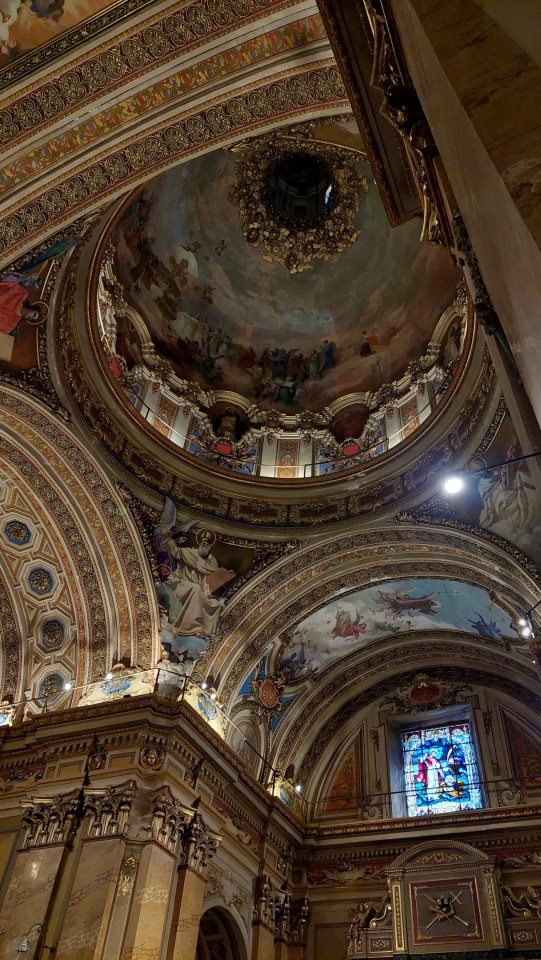
0 notes
Text
//
#if any of u have read nuestra america by vicky ruiz can u give me a summary pls and thank you#if ure willing to read it and send me a summary before 11pm today ill send u a pdf of it too 🥰#....i have work and have had work all week . dying currently
0 notes
Text



have you ever wondered why exactly in new york theres such a massive puerto rico parade every year? why we get so excited when something as small as the flag 🇵🇷 motif when rio snaps at miles makes us go batshit with pride? wonder no more! heres a super short super condensed history lesson about puerto rico and our flag 🇵🇷🇵🇷🇵🇷🇵🇷🇵🇷
to first really understand this you need to know that puerto rico is still an american colony. we are severely affected by this in a lot of horrible ways and have been since the very beginning. our island is a strategic military colony and thats why america holds us tightly in their grip. we dont like that. and the ones that do have been severely brainwashed into thinking being a colony is better for us (its not america makes billions off of us and barely any of it goes back to the island)
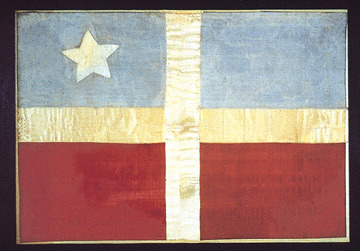

on the right is what was the puertorican flag of the independence movement a direct threat to the american government in puerto rico. on the left, the pr flag from 1898 to 1952 (the blue was later changed to a darker blue but light blue will forever b a fave bc its so nice on the eyes)
in 1948 a law was passed that made owning and displaying our flag illegal. the american government proclaimed that it was to suppress the independence movement which like bruh thats super fucked up. it wasnt till 1957 that that law was abolished. 1957 was 66 years ago as of 2023. we never won the fight to be our own country but we won the right to own and wave nuestra bandera 🇵🇷🇵🇷🇵🇷🇵🇷🇵🇷
we have immense pride in our flag because america has tried to oppress us at every given opportunity and still does to this day. our people the tainos are still not recognized federally in america. we are still here. and we WILL continue to wave our flag till our fingers bleed 🇵🇷🇵🇷🇵🇷🇵🇷🇵🇷

share our history. please dont let us be forgotten. and thankyou for reading! taino ti!!! 🇵🇷🇵🇷🇵🇷

#if i have to use miles to make yall care about our history i will#miles morales#atsv#puerto rico#que bonita bandera#puerto rican history#us history#Spotify
486 notes
·
View notes
Note
Mi viejo siempre cuenta la historia de que su viejo lo mando a enterrar una copia de "Las Venas Abiertas de America Latina" a los bosques de Palermo cuando se instalaron los milicos. Me parece que ahí se rompió el espacio-tiempo que nos llevó hasta acá.
Suena realmente como una escena de una novela, y no es coincidencia, ya que tantas de nuestras historias hablan de eso.
76 notes
·
View notes
Text
Compañeros, hermanos, amigos escuchen y regocíjense.
Europa está en caos, el imperio español se está derrumbando, Portugal continúa perdiendo influencia y Francia pelea en demasiados frentes, es hora de unir nuestras fuerzas, nuestros pueblos pelearán por la libertad, por la justicia ¡Por América!
No sólo derrotaremos a los gachupines, portugueses y franceses en el campo de batalla ¡También nos veremos mejor que ellos mientras lo hacemos!
Esta encuesta determinará quién de todas estas sensuales personas latinoamericanas será la que opacará más a los europeos, a la que más gente le encantaría tener en su cama por una noche ¡El mas grande ejemplo de exquisitez latinoamericana!
¿Quieres nominar a alguien para tan aclamado premio? Puedes hacerlo aquí
Reglas:
1. Puedes nominar a todas las personas que quieras, el formulario no tiene un límite
2. Animamos a que manden propaganda (en inglés o español o portugués)
3. Sexy man/hombre sexy es un término sin género, todos, todas y todes son bienvenidos.
4. Serán juzgados en base de las edades que tenían durante las guerras por la independencia y los admins se esforzarán para encontrar los retratos apropiados.
Eng:
Comrades, brothers, friends listen and rejoice.
Europe is in chaos, the Spanish empire is collapsing, Portugal continues to lose influence, and France is fighting on too many fronts. It is time to join forces, our people fight for liberty and for justice. For America!
We will not only defeat the gachupines, the Portuguese and the French on the battlefield. We will also do it while looking better than them!
This contest will determine who among these sexy Latin Americans outshines the Europeans the most, who most people would invite to their bed for a night. The best example of the exquisiteness of Latin America!
Do you want to nominate someone for such an honor? Nominate them here.
Rules:
You can nominate as many people as you want. The form does not have a limit.
Propaganda is encouraged (in English or Spanish or Portuguese)
Sexyman is a gender neutral term.
They will be judged based on the age they were during the wars for independence and the admins will try their best to find appropriate portraits.
La lista hasta ahora/The existing list is here:
Virreinato de Nueva España
México:
1. Agustin de Iturbide
2. Leona Vicario
3. Juan Aldama
4. José Maria Morelos y Pavón x3
5. Vicente Guerrero x2
6. Antonio Lopez de Santa Anna
Virreinato del Nuevo Reino de Granada:
Colombia:
7. Antonio Nariño x3
8. Antonio Morales Galavís
9. Policarpa Salavarrieta x2
10. Francisco de Paula Santander x 2
Venezula:
13. Simón Bolívar x2
14. José Antonio Paez
Virreinato del Perú:
Perú
11. Manuela Sáenz de Vergara y Aizpuru
12. Micaela Bastidas
Ecuador:
15. Manuela a.k.a Manuelita Saenz x4
Bolivia:
16. Antonio José de Sucre x 2
17. María Ana Carcelén de Guevara y Larrea-Zurbano
Chile:
21. Manuel Javier Rodríguez y Erdoíza
22. José Miguel Carrera Verdugo
Virreinato del Río de la Plata:
Argentina:
18. Manuel Belgrano
19. José de San Martín x 3
20. Martín Miguel de Güemes
Uruguay:
23. Manuel Ceferino Oribe y Viana
24. Juan Antonio Lavalleja
25. José Fructuoso Rivera y Toscan
Haití:
26. Toussaint L’Ouverture
Brasil/The Empire of Brazil:
27. Joaquim Pires de Carvalho e Albuquerque
28. Maria Quitéria de Jesus x2
29. Joaquim Gonçalves Ledo
30. Maria Leopoldina
31. Pedro I
32. Hipólito José da Costa Pereira Furtado de Mendonça
33. José Bonifácio de Andrada e Silva
34.Francisco Gomes da Silva
35. Domitila de Castro Canto e Melo, Marquesa de Santos
34 notes
·
View notes
Text
USA: GRAN ENCUENTRO INTERNACIONAL DE ESCRITORES en LA QUINTA EXPO-LITERARIA "TINTA y TALENTO"
USA: GREAT INTERNATIONAL MEETING OF WRITERS at THE FIFTH LITERARY EXPO “INK and TALENT”
La 5ª Expo Literaria Internacional, celebrada en los Estados Unidos por Nuestra América on line radio, www.nuestraamericaonlineradio.com auspiciada por La Agencia Mundial de Prensa, sin lugar a dudas se ha catapultado como el gran encuentro Internacional de Escritores cuya tinta y talento se dejaron apreciar…

View On WordPress
#CANADA#CATALUNYA#CHILE#COLOMBIA#COLOMBIA lomas#CRISTINA#CRISTINA BARCELONA CEO#ELIZABETH#GRAN ENCUENTRO INTERNACIONAL DE ESCRITORES#la agencia mundial de prensa#LINA MARIA#lomasleido#lomasvisto#MARYSOL APOLITANO#MIA LUNA CELESTE#NUESTRA AMERICA#PERU#QUINTA EXPO-LITERARIA#SANDRA#TINTA Y TALENTO#USA#www.nuestraamericaonlineradio.com
0 notes
Text
Everyone who grew up with Saturday-morning cartoon television in the 1980s or 1990s is surely familiar with the universe of the Smurfs. During many years of adventures, however, the diet of the little blue creatures remained somewhat of a mystery.
The principal ingredient of many of their dishes was “Smurf berries,” which grew on bushes, but the indistinct appearance of the bushes gave few clues about their botanical nature. This was a deliberate move of the Smurfs’ creator, Belgian cartoonist Peyo (Pierre Culliford, 1928–1992). When the Smurfs were still only a European phenomenon, the Smurf berries were referred to by the French name salsepareille. Peyo chose this name for its exotic sound, initially being unaware that the name referred to very real plants. The name sarsaparilla or salsaparilla, as the plant is known in English, had been used for various species of the genus Smilax for centuries.
When the Smurfs became a phenomenon in the United States, the sarsaparilla shrub lost its berries, because many American viewers were thought to be familiar with sarsaparilla as a real plant. Smilax species are typically climbing vines (not Smurf shrubs) that can be woody, prickly, or both. They appear in tropical and subtropical areas around the world. The fact that an American audience might sooner recognize sarsaparilla than a European audience has everything to do with the plant’s history, which mainly revolves around Smilax species like S. aristolochiifolia and S. ornata, from Mexico and Central America. The best-known episodes from sarsaparilla’s history -- first as a medicine and later as a tonic drink -- are indeed about species from the New World.

The introduction of the Smurfs in the United States signified, in fact, sarsaparilla’s second Atlantic crossing. The oldest references to sarsaparilla are from Old World antiquity, where Smilax aspera was used as an antidote for poisons. The Roman medical writer Dioscorides (first century CE) devoted a chapter to this plant [...]. This description survived many centuries and became firmly embedded in the European medical tradition. [...] When European naturalists explored the plants of the New World in the sixteenth century, they tended to relate new species to better-known plants whenever they could. [...] Nicolás Monardes (1493–1588) described different kinds of American sarsaparilla in his work Historia medicinal de las cosas que se traen de nuestras Indias Occidentales (1565). His descriptions carried a commercial touch. For instance, he tried to convince his readers that the whitish sarsaparilla from Honduras was better than the black variety from Mexico. Similarly, he aimed to embed the new American kinds of sarsaparilla in the traditional framework of European medicine. [...]
The old name sarsaparilla began to be associated not only with new Smilax species from different geographical regions, but also with new diseases. American sarsaparilla was not used as an antidote in cases of poisoning by venomous animals, but to cure syphilis. Syphilis had swept Europe [...], and the market for syphilis remedies was booming. Yet a range of botanical substances had to compete with preparations that contained mercury. The most famous botanical antisyphilitics were of exotic origin: guaiacum wood, China root, sarsaparilla root, and sassafras wood. All these plant parts became staple drugs in European pharmacies [...].
---
Sarsaparilla [...] was also valued as a flavoring ingredient in medicinal tonic drinks, often along with sassafras. As such, sarsaparilla was to enjoy another wave of popularity in a later age. [...] As a medical commodity, sarsaparilla enjoyed great commercial success early on. Between 1568 and 1619 alone, 670 tons of sarsaparilla were imported in Seville, Spain, equivalent to some 7.5 million doses. [...]
In the eighteenth and nineteenth centuries, the borders between medicinal and other uses of sarsaparilla blurred. Proprietary remedies with sarsaparilla abounded, with the Ayer and Hood companies from Lowell, Massachusetts, turning the production of sarsaparilla into big business. In advertisements, it was usually promoted as a tonic, to purify the blood, and to create appetite. Because it was of American origin, it was supposedly especially suitable for American patients.
By this time, then, sarsaparilla had lost many of the Old World medical and cultural connotations [...]. The divide became so pronounced that European fans of the Smurfs in the twentieth century were no longer expected to recognize the name of a plant that had been a mainstay of pharmaceutical practice there for centuries, while the name sarsaparilla lived on as a soft drink in the United States.
---
Image, caption, and all text above by: Wouter Klein. “Plant of the Month: Sarsaparilla.” JSTOR Daily. 16 June 2021. ”Plant of the Month” series is a partnership between Dumbarton Oaks and JSTOR Labs. [Image screenshotted and shown as it appears in Klein’s article, but illustration originally from U.S. National Library of Medicine and in the public domain. Bold emphasis and some paragraph breaks/contractions added by me.]
66 notes
·
View notes
Text

Iglesia de Nuestra Señora del Carmen, Guatapé, Antioquia, COLOMBIA
#church of our lady of carmen#iglesia de nuestra señora del carmen#iglesia#church#guatapé#antioquia#colombia#south america#america del sur#america
18 notes
·
View notes
Note
Buenas, buenas, vengo a hacer propaganda para el pulgarcito de America ¡El salvador! ᕕ( ᐛ )ᕗ
Aquí le tenemos hermosas playas, con una increibles olas para surfear y deporte acuatico.
¿Comó? ¿Odias la arena y el pescado? ¡No hay problema! para ustedes tenemos ¡Grandes montañas! Disfrute de un día de caminata por los senderos, con la fauna y flora mas exquisita que sus ojos podran contemplar.
Y sin olvidar la comida mas deliciosa que jamas han probado, le tenemos de todos, pupusas, nuegados, empanadas, tamales, elotes, pan dulcito, todo los puede disfrutar con el cafecito de la tarde recien salido de nuestras tierras.
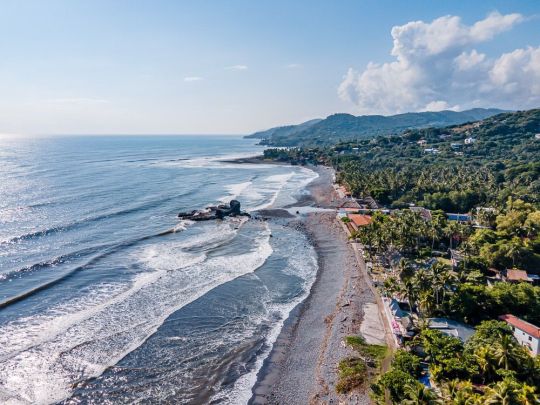

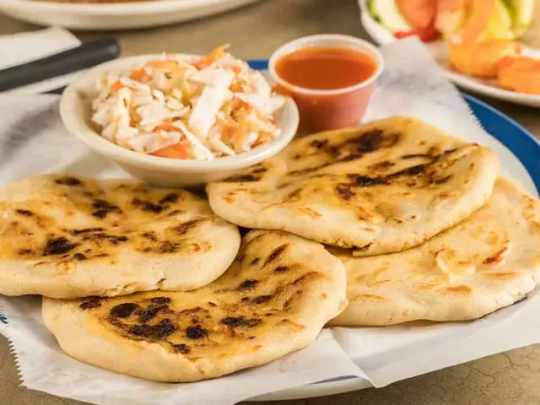
Eso es todo, gracias por su atencion. Voten, voten, voten, ¡Voten El Salvador! 🇸🇻👍
Pueden votar por El Salvador acá
#asklatinotiktok#propaganda#ksjfksf ahora voy a pegar los polls en la propaganda sino no los encuentran
38 notes
·
View notes
Text
Boy! Lots of reveals today!
Let's look at Skeledirge.

The Diplocynodon is an ancient crocodile. More than 100 have been found in Catalonia. (Northeastern Spain) So the name "Skeledirge" being "skeleton" and "dirge" (which is a song of mourning) fits for an extinct animal.

Spain also had a massive and powerful navy. And was well known for its war ships. One of the most famous being the Nuestra Señora de la Santísima Trinidad. She was the heaviest-armed ship in the world when rebuilt in 1802, and had the most guns (140) of any ship of the line outfitted in the Age of Sail. Needless to say, it was a ship with a lot of "fire power". It was also described as being red with white streaks across the hull.


Also many Naval flags in Spain have red, yellow and purple on them. The same colors that Skeledirge has.
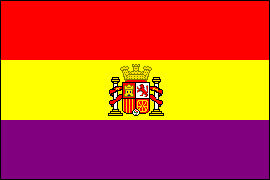
Spain was also well known for its galleons. A type of heavy armored ship that could be used for carrying cargo or as a warship. Now most of Europe had galleons from the 16th-19th century, but Spain's were known for being particularly large. They were usually armed with 60 canons and were adapted from the standard galleon design to increase cargo capacity. They were used in Spain's treasure fleets that traveled from the Americas to Europe annually. They compromised speed for size, but made up for it by having more armaments and thicker hulls. They were built to take a hit and keep on coming.
Another design of the galleon were the beaklike prows (front of the ship). Lanterns were often put at the prow to help light the way through darkness or fog.

The markings on Skeledirge's face are also reminiscent of modern day warships.

#skeledirge#pokemon#pokemon scarlet#pokemon violet#pokemon origins explained#origins explained#local spaniard dropping spanish facts#pokemon scarvi spoilers
266 notes
·
View notes